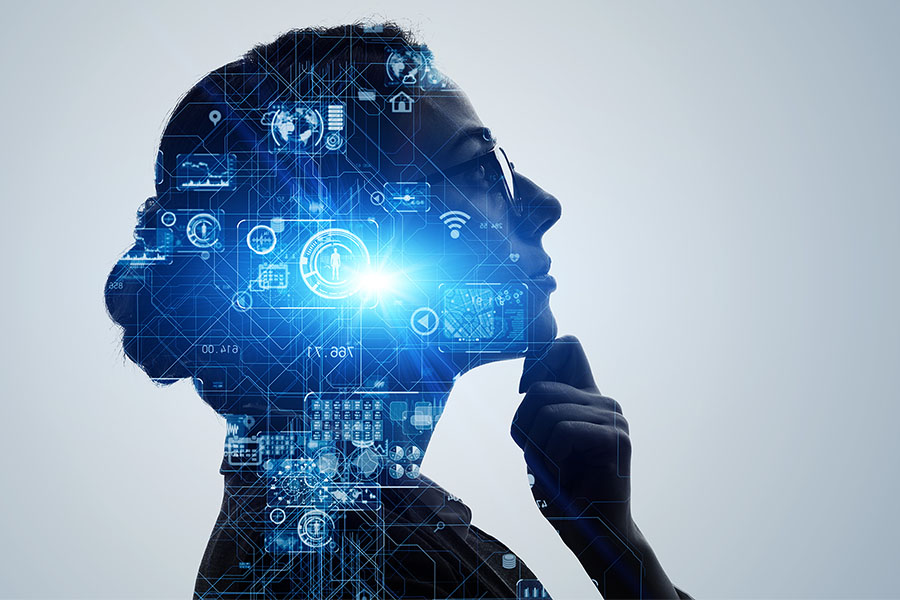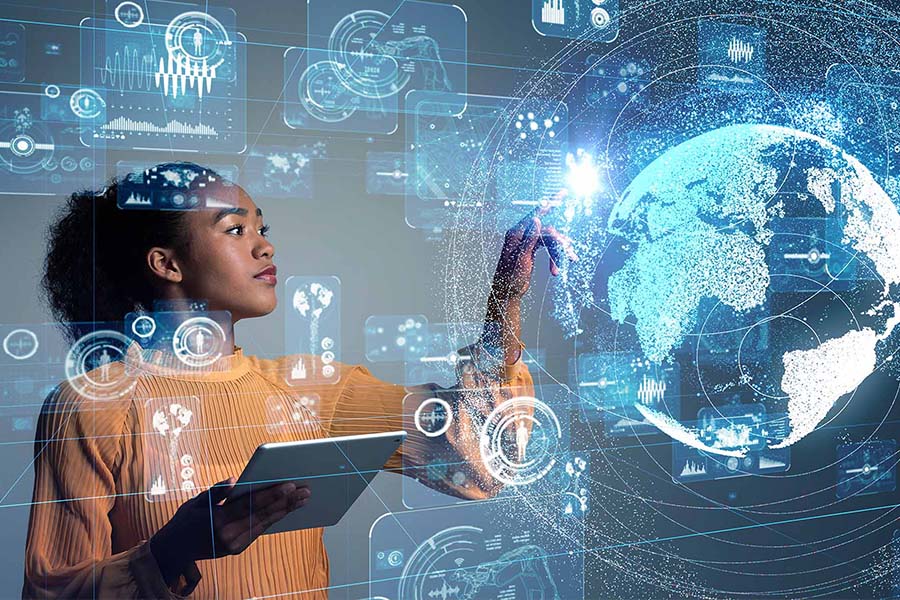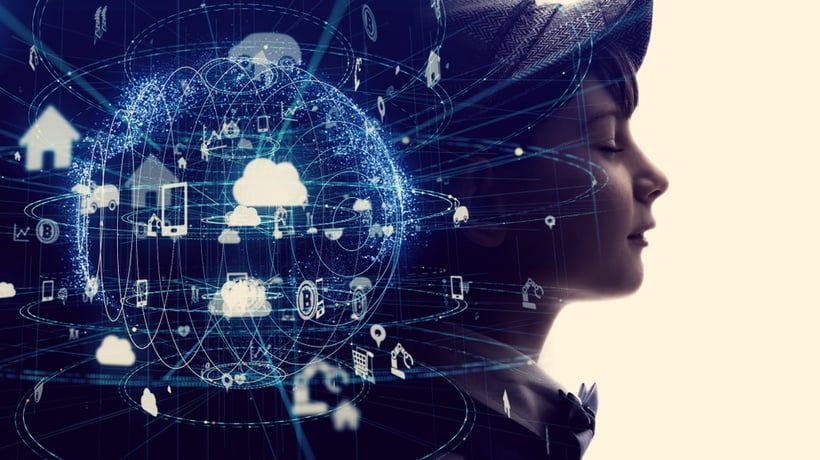As the world becomes more interconnected, businesses must develop cultural competence to thrive in today's global market. Cultural competence is the ability to understand, appreciate, and effectively communicate with people from different cultures. ChatGPT, an AI-powered language model, can play a crucial role in building bridges across cultural differences. In this blog post, we'll explore how ChatGPT can enhance cultural competence in the workplace and help businesses connect with customers from diverse backgrounds.
ChatGPT Literacy For Corporate Teams Of All Sizes (Online Course) (Sign Up!)
1. Language Translation
One of the most significant benefits of using ChatGPT in building cultural competence is its ability to translate languages. With its advanced language processing capabilities, ChatGPT can translate messages in real-time, enabling businesses to communicate effectively with customers who speak different languages. This can help businesses reach new markets and build stronger relationships with customers from diverse backgrounds.
2. Cultural Context
ChatGPT can also be trained to understand cultural context, such as customs, beliefs, and values, which can affect communication. By incorporating cultural context into its responses, ChatGPT can help businesses avoid misunderstandings and build more meaningful connections with customers from different cultures.
3. Customization
Another benefit of ChatGPT is its ability to be customized to suit specific cultural needs. By training ChatGPT to understand the nuances of a particular culture, businesses can deliver more personalized and effective communications. This can help build trust and rapport with customers from diverse backgrounds, leading to increased loyalty and sales.
4. Employee Training
ChatGPT can also be used to train employees on cultural competence. By using ChatGPT to simulate interactions with customers from different cultures, employees can develop a better understanding of cultural norms, communication styles, and customer needs. This can help businesses create a more inclusive workplace and deliver better customer service.
5. Improved Interpersonal Relationships
Finally, ChatGPT can be used to improve interpersonal relationships between employees from different cultures. By providing a safe space for employees to practice communication with ChatGPT, businesses can build empathy, respect, and understanding between team members. This can lead to a more harmonious workplace and better collaboration.
ChatGPT Literacy For Corporate Teams Of All Sizes (Online Course) (Sign Up!)
In conclusion, ChatGPT can help businesses develop cultural competence and connect with customers from diverse backgrounds. By providing language translation, understanding cultural context, customization, employee training, and improving interpersonal relationships, ChatGPT can help build bridges across cultural differences. As businesses become more global, ChatGPT is poised to become an essential tool for building cultural competence and creating a more inclusive workplace.
Monday, May 01, 2023
The Role Of ChatGPT In Customer Service And Sales
In the age of digital transformation, businesses are always on the lookout for ways to improve their customer service and sales strategies. One of the most innovative and effective tools available today is ChatGPT, an AI-powered language model that can help businesses deliver personalized customer service and boost sales. In this blog post, we'll explore the role of ChatGPT in customer service and sales, and how businesses can leverage its capabilities to improve their bottom line.
ChatGPT Literacy For Corporate Teams Of All Sizes (Online Course) (Sign Up!)
1. Automated Customer Service
One of the most significant benefits of using ChatGPT in customer service is the ability to automate routine tasks. ChatGPT can handle a wide range of customer inquiries, such as answering frequently asked questions, providing product information, and processing simple transactions. By automating these tasks, businesses can free up their customer service teams to focus on more complex issues that require human interaction.
2. Personalized Customer Interactions
ChatGPT can also be used to deliver personalized customer interactions. By analyzing customer data and learning from previous interactions, ChatGPT can tailor its responses to each individual customer, providing a more engaging and personalized experience. This can help businesses build stronger customer relationships and increase customer loyalty.
3. Sales Assistance
In addition to customer service, ChatGPT can also be used to boost sales. By using natural language processing and machine learning, ChatGPT can analyze customer inquiries and provide relevant product recommendations, cross-sell or upsell opportunities, and personalized promotions. This can lead to increased sales and higher customer lifetime value.
ChatGPT Literacy For Corporate Teams Of All Sizes (Online Course) (Sign Up!)
4. 24/7 Availability
ChatGPT can also provide 24/7 availability for customers, allowing them to get the information they need and make purchases at any time. This can be especially valuable for businesses that have customers in different time zones or operate in industries where customers need access to support around the clock.
5. Cost-Effective Solution
Finally, ChatGPT can be a cost-effective solution for businesses. By automating routine tasks and providing personalized interactions, ChatGPT can help businesses reduce the need for human customer service representatives and sales staff. This can result in significant cost savings while still providing high-quality customer service and driving sales.
ChatGPT Literacy For Corporate Teams Of All Sizes (Online Course) (Sign Up!)
In conclusion, ChatGPT can play a vital role in improving customer service and sales for businesses of all sizes. By automating routine tasks, providing personalized interactions, assisting with sales, providing 24/7 availability, and offering a cost-effective solution, ChatGPT can help businesses boost their bottom line and provide a better customer experience. As more businesses turn to AI-powered solutions for customer service and sales, ChatGPT is poised to become an essential tool for driving growth and success.
ChatGPT Literacy For Corporate Teams Of All Sizes (Online Course) (Sign Up!)
1. Automated Customer Service
One of the most significant benefits of using ChatGPT in customer service is the ability to automate routine tasks. ChatGPT can handle a wide range of customer inquiries, such as answering frequently asked questions, providing product information, and processing simple transactions. By automating these tasks, businesses can free up their customer service teams to focus on more complex issues that require human interaction.
2. Personalized Customer Interactions
ChatGPT can also be used to deliver personalized customer interactions. By analyzing customer data and learning from previous interactions, ChatGPT can tailor its responses to each individual customer, providing a more engaging and personalized experience. This can help businesses build stronger customer relationships and increase customer loyalty.
3. Sales Assistance
In addition to customer service, ChatGPT can also be used to boost sales. By using natural language processing and machine learning, ChatGPT can analyze customer inquiries and provide relevant product recommendations, cross-sell or upsell opportunities, and personalized promotions. This can lead to increased sales and higher customer lifetime value.
ChatGPT Literacy For Corporate Teams Of All Sizes (Online Course) (Sign Up!)
4. 24/7 Availability
ChatGPT can also provide 24/7 availability for customers, allowing them to get the information they need and make purchases at any time. This can be especially valuable for businesses that have customers in different time zones or operate in industries where customers need access to support around the clock.
5. Cost-Effective Solution
Finally, ChatGPT can be a cost-effective solution for businesses. By automating routine tasks and providing personalized interactions, ChatGPT can help businesses reduce the need for human customer service representatives and sales staff. This can result in significant cost savings while still providing high-quality customer service and driving sales.
ChatGPT Literacy For Corporate Teams Of All Sizes (Online Course) (Sign Up!)
In conclusion, ChatGPT can play a vital role in improving customer service and sales for businesses of all sizes. By automating routine tasks, providing personalized interactions, assisting with sales, providing 24/7 availability, and offering a cost-effective solution, ChatGPT can help businesses boost their bottom line and provide a better customer experience. As more businesses turn to AI-powered solutions for customer service and sales, ChatGPT is poised to become an essential tool for driving growth and success.
ChatGPT And Conflict Resolution: Improving Interpersonal Relationships In The Workplace
Conflict is a natural part of any workplace, but it can be detrimental to employee morale, productivity, and overall success if not managed effectively. One way to improve conflict resolution in the workplace is by utilizing AI-powered language models like ChatGPT. In this blog post, we'll explore how ChatGPT can be used to improve interpersonal relationships and conflict resolution in the workplace.
ChatGPT Literacy For Corporate Teams Of All Sizes (Online Course) (Sign Up!)
1. Providing Neutral Communication
One of the biggest benefits of using ChatGPT for conflict resolution is its neutrality. ChatGPT does not have biases or emotions that can cloud judgment or escalate conflicts. By using ChatGPT as a mediator, employees can communicate their thoughts and feelings in a neutral environment, which can lead to a more productive conversation and resolution.
2. Enhancing Communication Skills
ChatGPT can also be used to enhance communication skills among employees. By providing feedback and suggestions for improving communication, ChatGPT can help employees learn how to express themselves more effectively, listen actively, and communicate with empathy. This can lead to better interpersonal relationships and a more positive work environment.
3. Providing Privacy and Anonymity
In some cases, employees may be hesitant to express their thoughts and feelings about conflicts out of fear of retaliation or judgment. ChatGPT can provide a safe and confidential space for employees to express themselves without fear of consequences. This can lead to more honest and open communication, which can lead to a better understanding of the underlying issues and more effective conflict resolution.
ChatGPT Literacy For Corporate Teams Of All Sizes (Online Course) (Sign Up!)
4. Saving Time and Resources
Traditional conflict resolution methods, such as in-person meetings or consultations with HR, can be time-consuming and resource-intensive. By using ChatGPT, conflicts can be resolved quickly and efficiently, allowing employees to focus on their work and reducing the impact of conflicts on overall productivity.
5. Offering Consistency
ChatGPT can also provide consistency in conflict resolution. By using a standardized process and approach, ChatGPT can ensure that conflicts are addressed fairly and consistently across the organization. This can help build trust and confidence in the conflict resolution process among employees.
In conclusion, ChatGPT can be a powerful tool for improving conflict resolution and interpersonal relationships in the workplace. By providing neutral communication, enhancing communication skills, providing privacy and anonymity, saving time and resources, and offering consistency, ChatGPT can help employees address conflicts more effectively and build stronger relationships. Businesses that incorporate ChatGPT into their conflict resolution processes can improve employee morale, productivity, and overall success.
ChatGPT Literacy For Corporate Teams Of All Sizes (Online Course) (Sign Up!)
ChatGPT Literacy For Corporate Teams Of All Sizes (Online Course) (Sign Up!)
1. Providing Neutral Communication
One of the biggest benefits of using ChatGPT for conflict resolution is its neutrality. ChatGPT does not have biases or emotions that can cloud judgment or escalate conflicts. By using ChatGPT as a mediator, employees can communicate their thoughts and feelings in a neutral environment, which can lead to a more productive conversation and resolution.
2. Enhancing Communication Skills
ChatGPT can also be used to enhance communication skills among employees. By providing feedback and suggestions for improving communication, ChatGPT can help employees learn how to express themselves more effectively, listen actively, and communicate with empathy. This can lead to better interpersonal relationships and a more positive work environment.
3. Providing Privacy and Anonymity
In some cases, employees may be hesitant to express their thoughts and feelings about conflicts out of fear of retaliation or judgment. ChatGPT can provide a safe and confidential space for employees to express themselves without fear of consequences. This can lead to more honest and open communication, which can lead to a better understanding of the underlying issues and more effective conflict resolution.
ChatGPT Literacy For Corporate Teams Of All Sizes (Online Course) (Sign Up!)
4. Saving Time and Resources
Traditional conflict resolution methods, such as in-person meetings or consultations with HR, can be time-consuming and resource-intensive. By using ChatGPT, conflicts can be resolved quickly and efficiently, allowing employees to focus on their work and reducing the impact of conflicts on overall productivity.
5. Offering Consistency
ChatGPT can also provide consistency in conflict resolution. By using a standardized process and approach, ChatGPT can ensure that conflicts are addressed fairly and consistently across the organization. This can help build trust and confidence in the conflict resolution process among employees.
In conclusion, ChatGPT can be a powerful tool for improving conflict resolution and interpersonal relationships in the workplace. By providing neutral communication, enhancing communication skills, providing privacy and anonymity, saving time and resources, and offering consistency, ChatGPT can help employees address conflicts more effectively and build stronger relationships. Businesses that incorporate ChatGPT into their conflict resolution processes can improve employee morale, productivity, and overall success.
ChatGPT Literacy For Corporate Teams Of All Sizes (Online Course) (Sign Up!)
Tips For Incorporating ChatGPT Literacy Training Into Employee Onboarding
Effective employee onboarding is critical to the success of any business. It sets the tone for employee engagement, productivity, and retention. One important aspect of onboarding is training employees on the tools and technologies they will be using in their roles. As AI-powered language models become more prevalent in the workplace, it's important to incorporate ChatGPT literacy training into employee onboarding to ensure that employees can communicate effectively and efficiently. In this blog post, we'll explore tips for incorporating ChatGPT literacy training into employee onboarding.
ChatGPT Literacy For Corporate Teams Of All Sizes (Online Course) (Sign Up!)
1. Introduce ChatGPT Early
Introduce ChatGPT to new employees early in their onboarding process. This can be done through a presentation, training session, or informational video. Make sure to explain the benefits of ChatGPT and how it can help employees communicate more effectively in their roles.
2. Provide Hands-On Training
Provide hands-on training to help employees become comfortable using ChatGPT. This can be done through guided practice exercises, group discussions, or one-on-one coaching sessions. Encourage employees to ask questions and provide feedback throughout the training process.
3. Highlight Best Practices
Highlight best practices for using ChatGPT effectively. This may include tips for writing clearly and concisely, using appropriate tone and language, and incorporating emotional intelligence into written communication. Provide examples of effective communication using ChatGPT and encourage employees to practice these techniques in their own writing.
4. Incorporate Feedback
Incorporate feedback into ChatGPT literacy training. Encourage employees to provide feedback on their experiences using ChatGPT and incorporate this feedback into future training sessions. This can help ensure that the training is effective and relevant to employees' needs.
5. Reinforce Learning
Reinforce learning by providing ongoing support and resources for using ChatGPT effectively. This may include access to training materials, online resources, or coaching sessions. Encourage employees to continue practicing their ChatGPT literacy skills and provide opportunities for them to apply their learning in real-world situations.
In conclusion, incorporating ChatGPT literacy training into employee onboarding can help ensure that employees are equipped with the skills they need to communicate effectively in their roles. By introducing ChatGPT early, providing hands-on training, highlighting best practices, incorporating feedback, and reinforcing learning, businesses can help employees become confident and proficient in using this AI-powered language model. This can lead to greater employee engagement, productivity, and success for the business.
ChatGPT Literacy For Corporate Teams Of All Sizes (Online Course) (Sign Up!)
ChatGPT Literacy For Corporate Teams Of All Sizes (Online Course) (Sign Up!)
1. Introduce ChatGPT Early
Introduce ChatGPT to new employees early in their onboarding process. This can be done through a presentation, training session, or informational video. Make sure to explain the benefits of ChatGPT and how it can help employees communicate more effectively in their roles.
2. Provide Hands-On Training
Provide hands-on training to help employees become comfortable using ChatGPT. This can be done through guided practice exercises, group discussions, or one-on-one coaching sessions. Encourage employees to ask questions and provide feedback throughout the training process.
3. Highlight Best Practices
Highlight best practices for using ChatGPT effectively. This may include tips for writing clearly and concisely, using appropriate tone and language, and incorporating emotional intelligence into written communication. Provide examples of effective communication using ChatGPT and encourage employees to practice these techniques in their own writing.
4. Incorporate Feedback
Incorporate feedback into ChatGPT literacy training. Encourage employees to provide feedback on their experiences using ChatGPT and incorporate this feedback into future training sessions. This can help ensure that the training is effective and relevant to employees' needs.
5. Reinforce Learning
Reinforce learning by providing ongoing support and resources for using ChatGPT effectively. This may include access to training materials, online resources, or coaching sessions. Encourage employees to continue practicing their ChatGPT literacy skills and provide opportunities for them to apply their learning in real-world situations.
In conclusion, incorporating ChatGPT literacy training into employee onboarding can help ensure that employees are equipped with the skills they need to communicate effectively in their roles. By introducing ChatGPT early, providing hands-on training, highlighting best practices, incorporating feedback, and reinforcing learning, businesses can help employees become confident and proficient in using this AI-powered language model. This can lead to greater employee engagement, productivity, and success for the business.
ChatGPT Literacy For Corporate Teams Of All Sizes (Online Course) (Sign Up!)
Subscribe to:
Posts (Atom)




